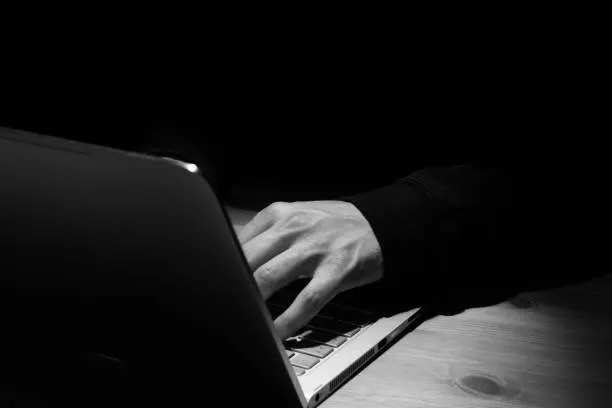The irruption of generative artificial intelligence has radically transformed the digital environment, offering new opportunities in sectors such as education, art, and medicine. Nevertheless, its misuse has given rise to unprecedented forms of aggression and manipulation, most notably deepfakes, falsified audiovisual content created through advanced artificial intelligence techniques that allow for identity impersonation with an alarming degree of realism.
Within this category, sexual deepfakes—those that insert the face, body, or voice of real individuals into pornographic scenes without their consent—constitute a particularly serious infringement of fundamental rights such as privacy, honor, personal image, and even moral integrity. These practices not only cause irreparable psychological and social harm to the victim, but also challenge the ability of the criminal justice system to effectively prevent, punish, and redress them.
The phenomenon raises challenges both at the substantive and procedural levels. At present, Spanish criminal law does not yet provide for an autonomous offence specifically penalizing the creation or dissemination of sexual deepfakes. However, a draft Ley Orgánica, introduced in March 2025, is currently under consideration. It foresees, among other measures, the amendment of the Criminal Code to expressly classify this conduct as a specific offence. Until such legislation comes into force, courts have been compelled to rely on general criminal provisions and to interpret specific cases under offences such as degrading treatment or serious defamation, in order to provide victims with a minimum level of protection against this new form of digital violence.
In this context, criminal law faces the difficult balance between upholding the principle of legality—which prohibits the retroactive application of unfavorable criminal laws—and providing an effective response to behaviors that, while not yet expressly codified, clearly infringe legally protected rights and interests.
What are Deepfakes?
The term deepfake derives from “deep learning” and “fake,” and designates any content (image, audio, or video) manipulated through generative artificial intelligence, typically by means of artificial neural networks such as GANs (Generative Adversarial Networks). These networks learn to imitate a person’s voice, gestures, and appearance, generating visual and auditory results of extreme realism.
The mimetic nature of deepfakes gives rise to a new category of harm: the infringement of rights without physical contact, yet with significant social, psychological, and reputational consequences. In the sexual sphere, this type of content seeks to denigrate, objectify, or humiliate the victim, generating consequences comparable to symbolic aggression.
Violation of Privacy, Honor, and Personal Image
The seriousness of sexual deepfakes lies not only in their falsity, but also in their capacity to destroy the victim’s reputation, dignity, and privacy. These artificial creations simulate sexually explicit scenes that never occurred, but which are indistinguishable from reality—especially to third parties unaware of the manipulation.
The harm is twofold:
- To the intimate sphere, by attributing to the victim a sexual conduct in which they never consented nor engaged.
- To the social dimension, by generating a degrading public perception that may lead to stigmatization, harassment, loss of employment, or social isolation.
The Spanish Data Protection Agency and the General Council of the Judiciary have issued warnings regarding this new form of digital violence, particularly when the victims are women, minors, or public figures.
Legislative Advances: Towards Autonomous Criminalization
Despite their gravity, sexual deepfakes are not currently classified as an autonomous offence under the Spanish Criminal Code. Previous reforms did not expressly address this conduct, leaving victims to resort to more generic offences, such as:
- Offences against honor (Arts. 208 et seq. CC),
- Defamation or slander with publicity,
- Offences against moral integrity (Art. 173.1 CC),
- Disclosure of secrets or non-consensual dissemination of images (Art. 197 CC), applicable only where real (non-falsified) content is disseminated.
However, these provisions do not always ensure comprehensive criminal protection. For instance, where a third party generates a sexual deepfake without accessing private data or deriving economic benefit, the conduct may fall outside the classic typology, despite the real harm caused. This lacuna has prompted recent legislative initiatives.
The Ley Orgánica 10/2022, de Garantía Integral de la Libertad Sexual (the so-called “Only Yes is Yes” Law) introduced a relevant provision, expressly recognizing the non-consensual use of digitally manipulated images for sexual purposes as a form of digital sexual violence.
Furthermore, in March 2025 the Council of Ministers approved the Proyecto de Ley Orgánica for the Protection of Minors in Digital Environments, which proposes to amend the Criminal Code to specifically criminalize sexual deepfakes, with particular protection for minors and victims of gender-based violence. The offence would consist of the creation or dissemination of digitally manipulated sexual images without consent, incorporating custodial penalties as well as ancillary measures such as prohibitions on access to digital environments.
Non-Retroactivity of Unfavorable Criminal Laws
The principle of non-retroactivity of unfavorable criminal laws, enshrined in Articles 9.3 and 25.1 of the Spanish Constitution, precludes the application of new criminal offences to acts committed prior to their entry into force. This has been consistently affirmed by both the Constitutional Court and the Supreme Court. Consequently, deepfakes created before the entry into force of the forthcoming reform cannot be punished under the new criminal classification.
This principle of legal certainty protects citizens from the arbitrary exercise of the State’s ius puniendi. Nonetheless, it leaves evident legal gaps in the transitional period, during which many offensive, albeit serious, behaviors remain unpunished or inadequately addressed.
In the absence of a specific offence, practitioners must resort to existing criminal provisions to offer victims minimal protection. Among the applicable offences to sexual deepfakes are:
- Degrading treatment (Art. 173 CC): where the purpose of the video is to humiliate, psychologically subjugate, or cause serious moral suffering.
- Serious defamation (Art. 208 CC): where the content attacks the dignity of the victim, particularly if disseminated publicly.
As for non-sexual deepfakes, the following provisions may apply:
- Forgery (Arts. 390 et seq. CC): if it is proven that falsified content has been used for deceptive purposes, especially as evidence in judicial proceedings (cf. Supreme Court Judgment 674/2020 of 11 December).
- Procedural fraud (Art. 250.1.7º CC): where a deepfake is introduced as evidence in legal proceedings with the intent of obtaining an unjust decision. This requires harm to the economic interests of the opposing party or a third party (cf. STS 213/2019). Such harm is clear in patrimonial proceedings; in non-patrimonial cases, it may be established where a favorable ruling results in indirect economic benefit, such as avoiding civil liability.
These offences may be applied extensively, within the limits of the principle of legality (nullum crimen sine lege), provided no new offence is created through judicial interpretation. In other words, a sexual deepfake cannot be punished as such, but its harmful consequences may be subsumed under preexisting criminal provisions, depending on the case at hand.
The Problem of Veracity: Evidence and Manipulation
One of the primary challenges posed by deepfakes in criminal proceedings is their technical verisimilitude. The generated content is so realistic that it may deceive even expert witnesses. This has grave implications when such material is introduced as evidence in judicial proceedings, whether criminal or otherwise.
The introduction of a deepfake as evidence not only constitutes fraud upon the administration of justice, but may also turn the judicial process itself into an instrument of re-victimization—particularly where false evidence is deployed to harm the victim or undermine the prosecution.
Challenging Manipulated Evidence
A key procedural issue in handling deepfakes is their admissibility as evidence. Supreme Court jurisprudence has held that a party challenging digital evidence must present reasonable indications of falsity, without requiring conclusive proof at the initial stage.
Where there are well-founded suspicions of manipulation, the judge may order specific expert examinations, thereby shifting the burden of proof to the party seeking to introduce the audiovisual content. That party must then demonstrate its authenticity through sufficient technical means, particularly where its falsity has been alleged.
Moreover, the timing of the objection is crucial: the defense brief, provisional conclusions, or evidentiary stage may all be used to alert the court to potential manipulation.
The Role of the Expert in Analyzing Deepfakes
Given the technical complexity of deepfakes, expert testimony is essential. Identifying patterns of manipulation requires specialized knowledge in computer engineering, digital forensics, and data analysis.
The expert opinion must assess not only the authenticity of the file, but also its integrity, origin, metadata, and possible alterations. Automated tools alone are insufficient; specialized intervention is required to establish, with a reasonable degree of certainty, whether the file was artificially created or altered.
Although the expert report is not binding on the court, it nonetheless guides the evidentiary assessment in accordance with criteria of logic and judicial experience.
Towards Stricter Procedural Regulation
The proliferation of deepfakes necessitates procedural reform to reinforce mechanisms of control and verification of audiovisual evidence. Some doctrinal proposals include:
- Requiring a clear and verifiable digital chain of custody,
- Incorporating reinforced evidentiary standards for AI-generated content,
- Mandating expert cross-examination where manipulation is suspected,
- Defining broader criteria for unlawful evidence to safeguard the principle of effective judicial protection.
These measures would not only protect victims from new forms of aggression, but also strengthen trust in the judiciary in the face of technologically adulterated evidence.
Conclusion
The phenomenon of deepfakes represents one of the greatest challenges for contemporary criminal law. Their ability to cause harm without physical contact, to manipulate perceptions of reality, and to interfere with judicial proceedings compels a rethinking of traditional dogmatic categories such as forgery, unlawful evidence, and even the concept of intent.
At the legislative level, the trend is clear: express criminalization, specific aggravating factors, and technological updating of the Criminal Code. Yet this alone is insufficient. A parallel development in procedural law is indispensable, ensuring effective mechanisms for contesting evidence, rigorous evidentiary standards, and sustained investment in qualified experts. Only then can the criminal justice system adapt to a reality in which truth itself may be falsified with a single click.

